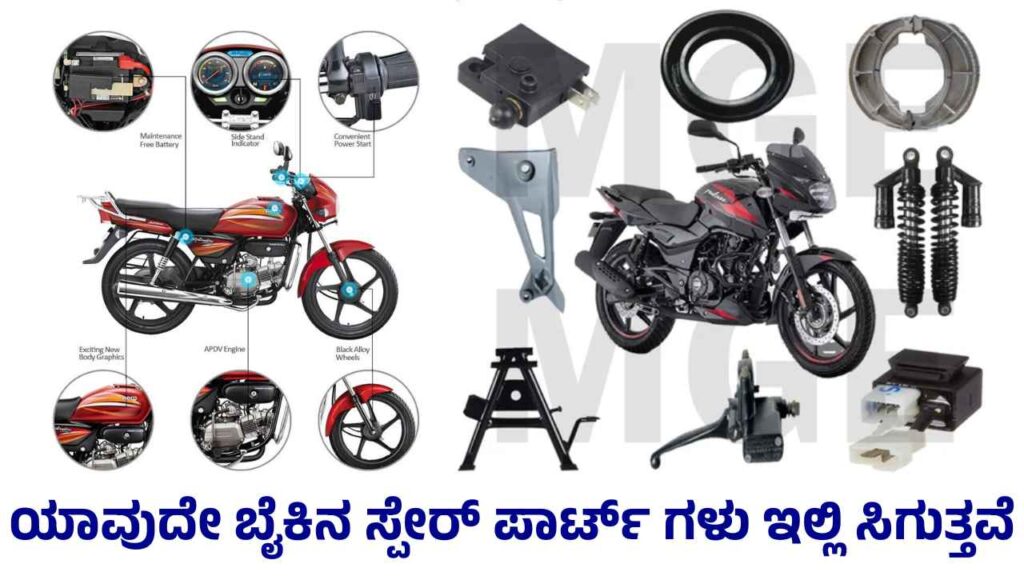Purchasing bike spare parts can seem daunting, especially for beginners. However, with the right approach, you can streamline the process, save time, and ensure you get quality components. Here’s a detailed, 1,000-word guide to help you buy bike spare parts effortlessly.

1. Identify the Exact Part You Need
Before buying any part, pinpoint what’s broken or needs replacement. Common bike parts include chains, brake pads, tires, derailleurs, pedals, or cassettes. If you’re unsure:
- Diagnose the issue: Is your bike making noise, wobbling, or failing to shift gears?
- Consult a mechanic: Local bike shops often offer free diagnostics.
- Use online resources: Watch repair videos or forums (e.g., Reddit’s r/bikewrench) to identify faulty parts.
For complex issues (e.g., bottom bracket or suspension), professional advice ensures accuracy.
2. Note Your Bike’s Details
Bike parts vary by model, brand, and year. Gather this information:
- Brand and model: Check the frame (often near the seatpost or headtube).
- Year of manufacture: Found on the serial number (usually under the bottom bracket).
- Specifications: Measure dimensions (e.g., tire size, chainring teeth, brake rotor diameter).
- Compatibility: Ensure new parts match your bike’s standards (e.g., disc vs. rim brakes, threadless vs. threaded stems).
Example: A Shimano 11-speed chain won’t fit a 9-speed cassette.
3. Find the Part Number
Manufacturers assign unique codes to parts for accuracy. Locate the number:
- Check the original manual: Lists part numbers for your bike.
- Inspect the existing part: Numbers are often engraved (e.g., “SHIMANO DEORE M6100”).
- Use online databases: Sites like BikeComponents.de or Shimano’s EV guides provide diagrams and codes.
If the part is unreadable, describe it to a retailer using photos or measurements.
4. Research Where to Buy
Local Bike Shops (LBS)
Pros: Expert advice, immediate availability, and support local businesses.
Cons: Limited inventory, potentially higher prices.
Online Retailers
- General marketplaces: Amazon, eBay (check seller ratings).
- Specialist sites: Chain Reaction Cycles, Jenson USA, or Competitive Cyclist.
- OEM websites: Buy directly from Shimano, SRAM, or Trek for genuine parts.
Secondhand Options
- Facebook Marketplace: Affordable used parts.
- Forums/communities: Pinkbike’s Buy/Sell section or BikeForums.net.
Auction Sites
eBay or Craigslist for rare/discontinued parts. Verify condition before buying.
5. Compare Prices and Quality
- Set a budget: Balance cost and quality (e.g., avoid ultra-cheap carbon parts).
- Check reviews: Sites like Trustpilot or Reddit highlight reliable sellers.
- Prioritize compatibility: A slightly pricier, compatible part saves money long-term.
- Verify authenticity: Counterfeit parts are common online. Buy from authorized dealers if possible.
6. Check Return Policies and Warranties
- Return window: Ensure you can return the part if it doesn’t fit.
- Warranty coverage: Manufacturers like SRAM offer lifetime warranties on some components.
- Shipping costs: Confirm who pays for returns (e.g., Zappos offers free returns; eBay varies by seller).
7. Place Your Order
- Double-check compatibility: Reconfirm part numbers and specs.
- Use secure payment methods: Credit cards or PayPal for buyer protection.
- Save receipts: Keep digital/physical copies for warranties or returns.
8. Install the Part
- DIY installation: Use YouTube tutorials (e.g., Park Tool’s channel) if you’re confident.
- Hire a mechanic: For complex tasks (e.g., headset pressing or hydraulic brake bleeding).
- Test thoroughly: Ensure the part functions safely before riding.
9. Maintain Records
Keep a log of replaced parts, dates, and suppliers. This helps with future repairs and warranties.
10. Build Relationships with Suppliers
- Join loyalty programs (e.g., REI Co-op).
- Subscribe to newsletters for discounts.
- Follow retailers on social media for flash sales.
Common Mistakes to Avoid
- Ignoring compatibility: A 29″ tire won’t fit a 26″ wheel.
- Overlooking shipping times: Order critical parts (e.g., chains) early.
- Choosing price over quality: Cheap brake pads may wear out faster.
- Skipping research: Verify seller reputations to avoid scams.
Tips to Save Money
- Buy in bundles: Kits (e.g., chain + cassette) often cost less.
- Wait for sales: Black Friday or end-of-season clearances.
- Consider used parts: Gently used saddles or handlebars can be 50% cheaper.
Conclusion
Buying bike spare parts is straightforward with careful planning. Identify the part, verify compatibility, research sellers, and prioritize quality. Whether you choose local shops or online retailers, this guide ensures a smooth process. Regular maintenance and organized records will also reduce future hassles. Happy riding!
Checklist for Easy Buying:
☑ Identify faulty part
☑ Note bike model/year
☑ Find part number
☑ Compare prices & sellers
☑ Check return policy
☑ Test after installation
By following these steps, you’ll keep your bike in top shape without stress.
